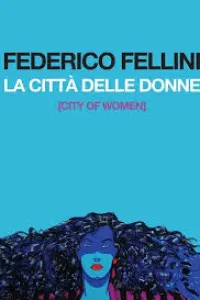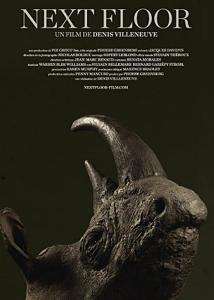
Dreamscape of Desire and Delight: 'City of Women' (1980) – Federico Fellini's Dazzling, Divisive Cult Masterpiece!
In the pantheon of cinematic giants, Federico Fellini stands as an unparalleled titan, a maestro of dreams, memory, and the vibrant, often chaotic, tapestry of the human psyche. By 1980, the Italian auteur had long cemented his status with masterpieces like La Dolce Vita, 8½, and Amarcord, films that redefined the boundaries of narrative and visual storytelling, often blurring the lines between reality and fantasy. Amidst the swirling socio-cultural currents of the late 1970s, a period marked by burgeoning feminist movements and shifting gender dynamics, Fellini, ever the provocateur and deeply introspective artist, turned his lens to the complex, often bewildering, relationship between men and women. City of Women (1980), or La città delle donne, emerges as a flamboyant, perplexing, and utterly unique response to these seismic shifts, a sprawling, operatic fever dream that serves as both a dazzling spectacle and a deeply personal, often controversial, exploration of masculinity in a rapidly changing world. It's a film that demands to be experienced, a kaleidoscopic journey into the subconscious mind of an artist grappling with the new realities of gender.
The film plunges us into the subconscious purgatory of Snàporaz (Marcello Mastroianni), an aging, womanizing intellectual who finds himself trapped in a fantastical, sprawling resort populated exclusively by women – a literal "city of women." What begins as a seemingly idyllic encounter rapidly transforms into a surreal odyssey through various feminist conventions, all-female gatherings, and bizarre, allegorical tableaux where women hold all the power, mock his advances, and dissect his every patriarchal impulse. From a chaotic congress where women assert their independence to a bizarre museum of grotesque female archetypes from his past, Snàporaz is forced to confront his own desires, fears, and antiquated notions of womanhood. Fellini brilliantly uses this dreamlike structure to satirize and explore the anxieties of the male ego confronted by a world where traditional power dynamics are being challenged, creating a film that is both a hilarious caricature and a surprisingly melancholic introspection on masculinity in crisis.
Fellini’s signature visual panache is on full, glorious display throughout City of Women, pushing his distinctive aesthetic to its maximalist limits. The film is a riot of color, elaborate sets, and fantastical costume design, brimming with the kind of larger-than-life characters and baroque environments that only Fellini could conjure. Each sequence is a meticulously crafted tableau, overflowing with symbolism and a relentless, dreamlike logic that defies conventional narrative structure. The camera glides and swoops, immersing the viewer in Snàporaz's subjective, often bewildered, perspective as he navigates this bewildering feminine landscape. This visual audacity is matched by a score that perfectly complements the film’s operatic grandeur and its moments of comedic absurdity, making the entire experience a sensory feast. It's a challenging film, designed to provoke, but its undeniable artistic ambition and its sheer visual invention make it utterly captivating, even when it's unsettling.
Despite its initial divisive reception – criticized by some feminists for its perceived caricatures, and by others for its overwhelming surrealism – City of Women has endured as a fascinating and essential cult film in Fellini's celebrated body of work. Marcello Mastroianni, Fellini's iconic alter ego, delivers a masterful performance, perfectly embodying the flustered, bewildered, and ultimately vulnerable male protagonist. He is supported by a memorable ensemble, including Anna Prucnal and Donatella Damiani, who bring various facets of the "feminine" to life within Fellini's fantastical vision. The film's sprawling, non-linear structure, its audacious blend of satire and self-reflection, and its unforgettable imagery ensure its lasting legacy as a unique cinematic exploration of gender roles. It remains a powerful testament to Fellini's uncompromising artistic vision, a film that continues to spark debate and inspire awe for its sheer, audacious creativity.
Director: Federico Fellini.
Cast: Marcello Mastroianni as Snàporaz, Anna Prucnal as Elena, and Donatella Damiani as Donatella.
Special Info/Trivia: The film was released amidst the height of the Second-wave Feminist movement, leading to much debate and varied interpretations regarding its stance on feminism. It's known for its extravagant, dreamlike, and surreal visuals, characteristic of Fellini's later work. Marcello Mastroianni often played characters seen as Fellini's cinematic alter ego. The film's sets were elaborate and fantastical, contributing significantly to its unique atmosphere. It received a mixed critical reception upon release but has gained cult status over time.





